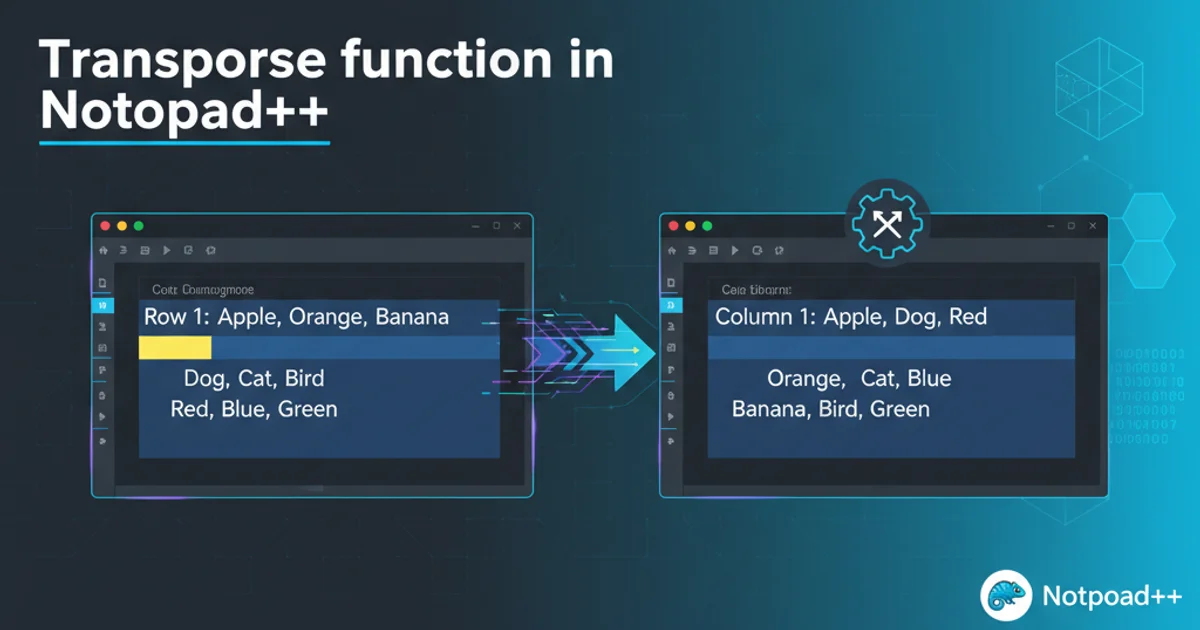How to convert signed to unsigned integer in python
Categories:
Converting Signed to Unsigned Integers in Python

Learn various techniques to convert signed integers to their unsigned equivalents in Python, understanding the underlying principles and practical applications.
Python's native integer type handles arbitrary precision, meaning it doesn't have a fixed bit-width like integers in languages like C or Java. This simplifies many operations, but it also means there's no direct 'unsigned integer' type. When working with external systems, network protocols, or hardware interfaces that expect fixed-width unsigned integers, you often need to simulate this behavior. This article explores common methods to achieve signed-to-unsigned conversion in Python, focusing on bitwise operations.
Understanding Signed and Unsigned Integers
In computer science, integers are typically stored in a fixed number of bits. The way these bits are interpreted determines whether the number is signed (can represent positive and negative values) or unsigned (can only represent non-negative values).
For signed integers, the most common representation is two's complement. In this system, the most significant bit (MSB) indicates the sign: 0 for positive, 1 for negative. For example, an 8-bit signed integer can range from -128 to 127. An 8-bit unsigned integer, however, can range from 0 to 255.
The conversion from a negative signed integer to its unsigned equivalent often involves adding a power of 2 corresponding to the bit-width. For instance, a signed 8-bit integer of -1 would be represented as 255 (0xFF) in an unsigned 8-bit system.
flowchart LR
A[Signed Integer (e.g., -1)] --> B{Determine Bit-Width (e.g., 8-bit)};
B --> C{If Negative?};
C -->|Yes| D[Add 2^Bit-Width (e.g., -1 + 2^8 = 255)];
C -->|No| E[Keep as is];
D --> F[Unsigned Equivalent (e.g., 255)];
E --> F;
F --> G[Result];Conceptual flow for converting a signed integer to its unsigned equivalent.
Method 1: Using Bitwise AND Operation
The most common and Pythonic way to convert a signed integer to its unsigned representation for a specific bit-width is by using the bitwise AND operator (&). This method effectively 'masks' the integer, keeping only the bits relevant to the desired unsigned representation. When a negative number is represented in two's complement, its bit pattern is identical to its unsigned equivalent when viewed within a fixed bit-width.
To convert a signed integer x to an unsigned integer of N bits, you can use the formula: x & ((1 << N) - 1). The term (1 << N) - 1 creates a bitmask with N ones (e.g., for N=8, it's (1 << 8) - 1 = 256 - 1 = 255, which is 0b11111111).
def signed_to_unsigned(signed_int, bit_width):
if signed_int >= 0:
return signed_int
else:
# For negative numbers, add 2^bit_width
# This is equivalent to signed_int & ((1 << bit_width) - 1)
return signed_int + (1 << bit_width)
# Example usage for 8-bit integers
print(f"-1 (8-bit signed) -> {signed_to_unsigned(-1, 8)} (unsigned)") # Expected: 255
print(f"-128 (8-bit signed) -> {signed_to_unsigned(-128, 8)} (unsigned)") # Expected: 128
print(f"127 (8-bit signed) -> {signed_to_unsigned(127, 8)} (unsigned)") # Expected: 127
# Using the bitwise AND directly
def signed_to_unsigned_bitwise(signed_int, bit_width):
mask = (1 << bit_width) - 1
return signed_int & mask
print(f"-1 (8-bit signed, bitwise) -> {signed_to_unsigned_bitwise(-1, 8)} (unsigned)") # Expected: 255
print(f"-128 (8-bit signed, bitwise) -> {signed_to_unsigned_bitwise(-128, 8)} (unsigned)") # Expected: 128
Python function demonstrating signed to unsigned conversion using addition and bitwise AND.
Method 2: Handling Specific Bit-Widths (e.g., 32-bit, 64-bit)
While Python integers have arbitrary precision, when interacting with external systems, you'll often encounter specific bit-widths like 32-bit or 64-bit. The bitwise AND method scales perfectly for these scenarios. You just need to adjust the bit_width parameter accordingly.
def signed_to_unsigned_32bit(signed_int):
return signed_int & 0xFFFFFFFF # Mask for 32 bits
def signed_to_unsigned_64bit(signed_int):
return signed_int & 0xFFFFFFFFFFFFFFFF # Mask for 64 bits
# Example for 32-bit
print(f"-1 (32-bit signed) -> {signed_to_unsigned_32bit(-1)} (unsigned)") # Expected: 4294967295
print(f"-2147483648 (32-bit signed) -> {signed_to_unsigned_32bit(-2147483648)} (unsigned)") # Expected: 2147483648
# Example for 64-bit
print(f"-1 (64-bit signed) -> {signed_to_unsigned_64bit(-1)} (unsigned)") # Expected: 18446744073709551615
Converting signed integers to 32-bit and 64-bit unsigned equivalents.
bit_width you choose. Using a bit_width that is too small for the magnitude of your signed integer (e.g., trying to convert -200 to an 8-bit unsigned) will result in an incorrect value due to overflow/truncation if the original signed value is outside the representable range of the target unsigned type.